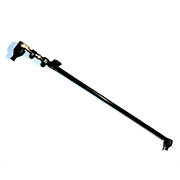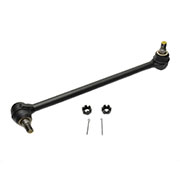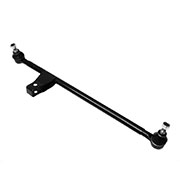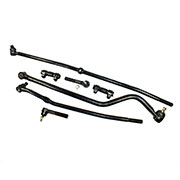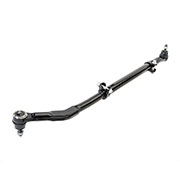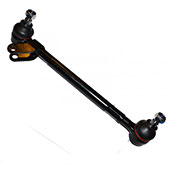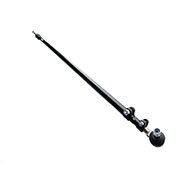
Our experience and expertise in automobile industry helps us to make suspension and steering parts as per your specification with high quality and finishing.
A drag link converts rotary motion from a crank arm, to a second bellcrank, usually in an automotive steering system.
The term is commonly used in automotive technology for the link in steering linkage that converts rotation of a pitman arm to a steering arm and eventually to tie rod links which pivot the wheels to be steered. The drag link converts the sweeping arc of the steering arm to linear motion in the plane of the other steering links.
Typically, one end of the drag link is connected via the Pitman arm and steering gearbox to the steering wheel (providing the connection between the driver and the steering system); the other end is attached to the steering linkage, by the steering arm.
An alternate steering mechanism is a rack and pinion, a three bar linkage that eliminates the drag link by directly moving a center link.
The drag link connects the pitman arm to the steering arm, or in some applications it connects to the tie rod assembly. Unlike a center link, the drag link does not connect to an idler arm, and has no inner tie rod ends attached to it. On some applications the drag link swings from the front to the rear of the vehicle. On these applications the drag link connects to the steering arm located at the wheel. In some Jeep applications, the drag link will swing from right to left on the vehicle and will connect to the steering arm at the wheel. Drag links can be a solid one-piece design or an adjustable design. Many drag links have replaceable or rebuildable ends.



